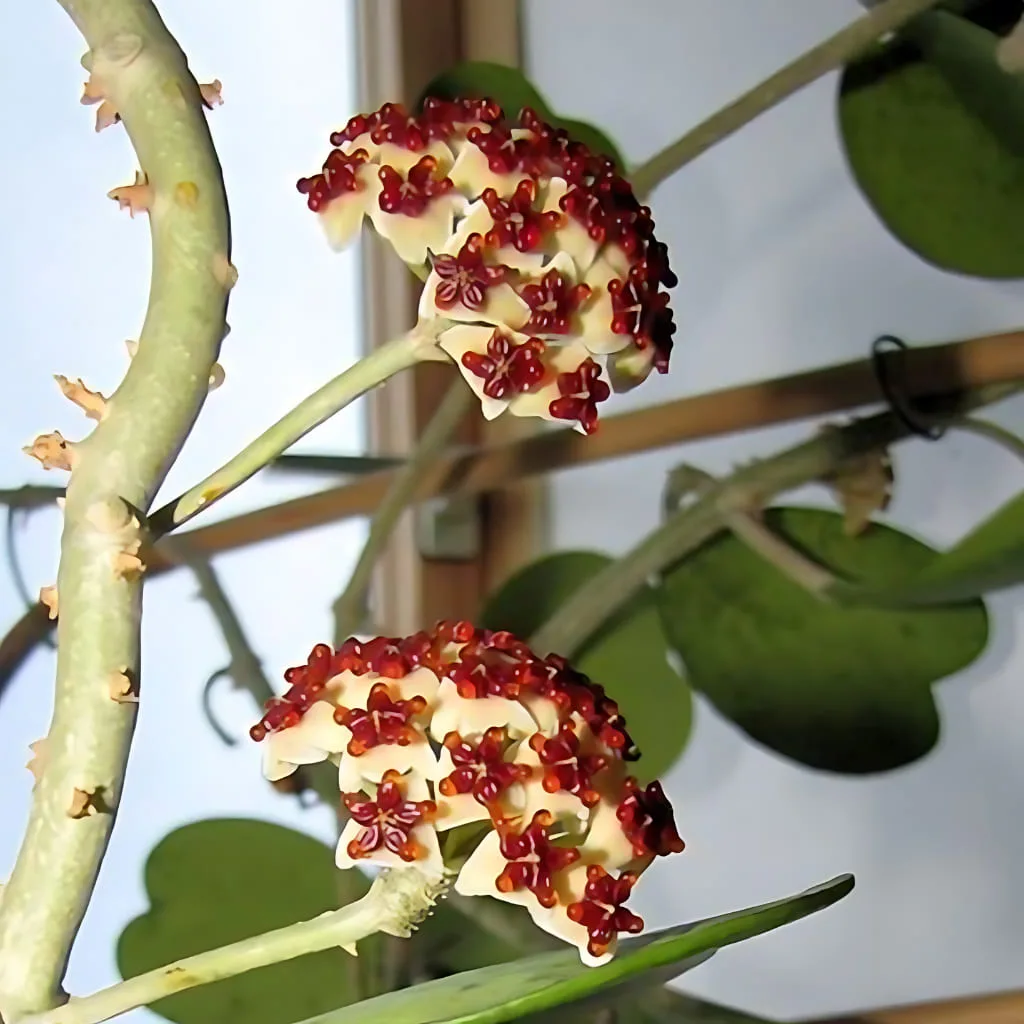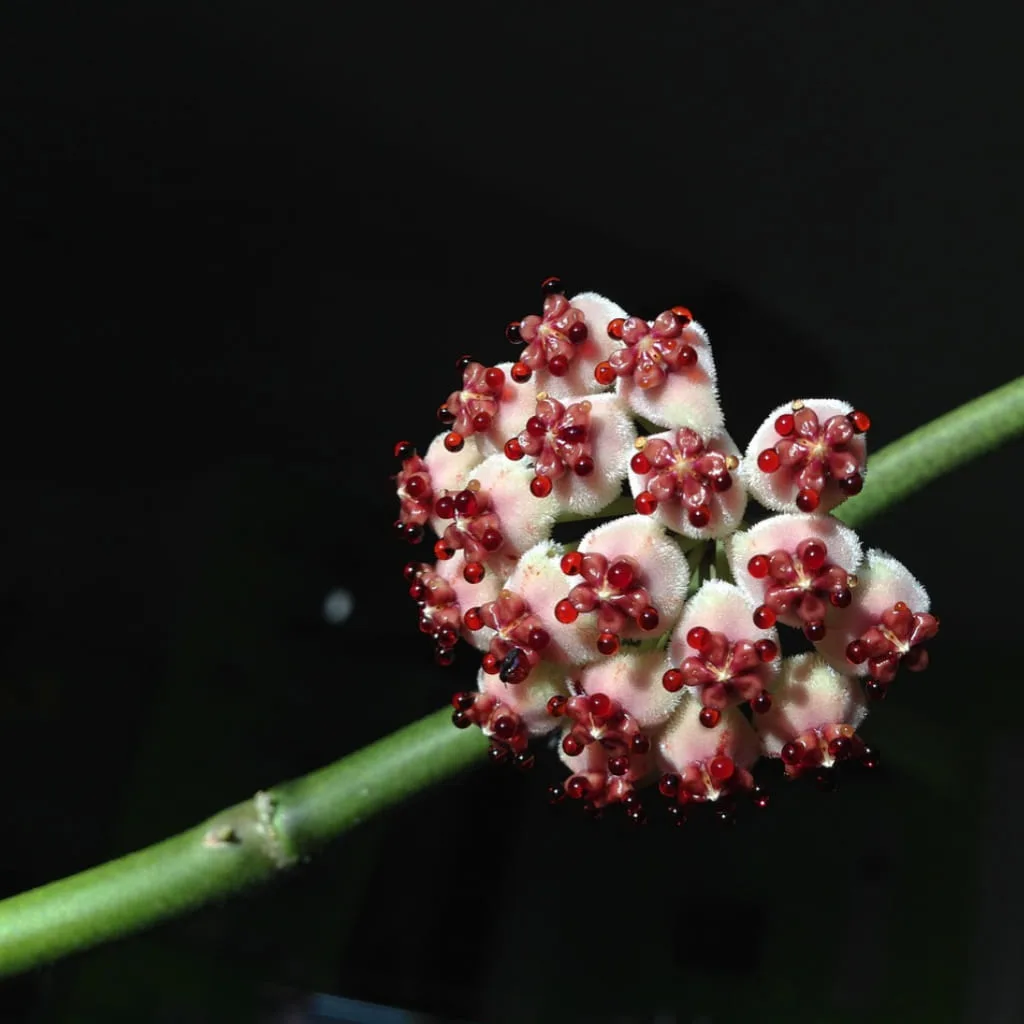Hoya Kerrii, also known as the heart-shaped Hoya, is a delightful and unique plant that’s perfect for adding a touch of charm to any space. Known for its glossy, heart-shaped leaves, this Hoya thrives in bright, indirect light. It doesn’t need constant watering just let the soil dry out between waterings to prevent overwatering. Hoya Kerrii is fairly low-maintenance but still requires a bit of attention. It also prefers warm temperatures and moderate humidity, making it a great choice for indoor environments. With proper care, this plant can grow into a stunning, cascading beauty!
In this article, we will explore everything you need to know about the Hoya Kerrii, from its origins and care tips to its symbolic meaning and how it can enhance your home environment.
What Is Hoya Kerrii?
The Hoya Kerrii is a species of the Hoya genus, a group of tropical plants known for their waxy leaves and unique growth patterns. What sets the Hoya Kerrii apart from other varieties is its distinctive heart-shaped leaves, which make it an especially popular gift on Valentine’s Day. Despite its appearance, this plant is more than just a novelty item; it’s a hardy and slow-growing succulent that can thrive in various indoor environments.
Native to Southeast Asia, particularly Thailand, Laos, and Cambodia, this plant is a vining succulent that can grow several feet long, though it is often sold as a single leaf rooted in soil. These single-leaf Hoya Kerrii plants can stay in their adorable heart-shaped form for years, making them a long-lasting and low-maintenance decorative option.
Quick Facts About Hoya Kerrii
- Common names: Sweetheart Hoya, Valentine Plant
- Scientific name: Hoya Kerrii
- Plant type: Succulent, Vining plant
- Origin: Southeast Asia (Thailand, Laos, Cambodia)
- Growth: Slow-growing, can grow several feet long as a vine
- Light needs: Bright, indirect light
- Watering: Low to moderate, drought-tolerant
- Toxicity: Non-toxic to pets and humans
Why Is Hoya Kerrii So Popular?
There are several reasons why the Hoya Kerrii has become such a popular houseplant in recent years. Its heart-shaped leaves are the most obvious reason, as they provide a cute and romantic aesthetic that appeals to a wide range of people.
But beyond its looks, the plant is also incredibly low-maintenance, making it ideal for busy individuals or those who are new to plant care. It doesn’t require frequent watering, and its succulent nature allows it to store water in its thick leaves, making it more drought-resistant than other houseplants.
Additionally, Hoya Kerrii is non-toxic, meaning it’s safe to have around pets and children. This makes it an excellent choice for households that are mindful of potential plant-related hazards.
How to Care for Hoya Kerrii
While the Hoya Kerrii is relatively easy to care for, there are still some specific guidelines to follow to ensure that your plant stays healthy and happy. Below, we’ll break down the essential care tips for this charming plant.
1. Light Requirements
Like most succulents, the Hoya Kerrii thrives in bright, indirect light. Placing it near a window that gets plenty of sunlight is ideal, but make sure it’s not exposed to direct sunlight for extended periods, as this can scorch the leaves.
If you live in a home with limited natural light, don’t worry! The Hoya Kerrii can also adapt to lower light conditions, though its growth may slow down. In such cases, you might want to supplement its light with a grow light to keep it happy.
2. Watering Schedule
The Hoya Kerrii is drought-tolerant, meaning it doesn’t need to be watered frequently. In fact, one of the most common mistakes people make with this plant is overwatering it. To avoid this, make sure the soil is completely dry before watering again.
A good rule of thumb is to water the plant about once every 2-3 weeks during the growing season (spring and summer) and even less during the dormant season (fall and winter). When you do water, make sure to give it a thorough soak but allow the excess water to drain out completely.
3. Soil and Potting
Choosing the right soil is essential for the health of your Hoya Kerrii. Since it’s a succulent, it prefers well-draining soil that allows excess water to escape easily. A cactus or succulent mix works perfectly for this plant. You can also add perlite or coarse sand to improve drainage further.
When it comes to potting, a pot with drainage holes is a must. This will prevent water from accumulating at the bottom, which could lead to root rot—a common issue with overwatered plants.
4. Temperature and Humidity
The Hoya Kerrii is a tropical plant, so it prefers warm temperatures and moderate humidity. Ideally, keep it in an environment where the temperature ranges between 65°F and 80°F (18°C to 27°C).
While it can tolerate slight fluctuations in temperature, make sure it’s not exposed to extreme cold or drafts, as this can damage the plant. If you live in a particularly dry climate, consider increasing the humidity by placing a humidifier nearby or misting the plant occasionally.
5. Fertilizing
Since the Hoya Kerrii is a slow grower, it doesn’t require frequent fertilization. However, feeding it with a balanced, water-soluble fertilizer during the growing season (spring and summer) can promote healthier growth. Use a diluted fertilizer once a month during these seasons, and avoid feeding it during the fall and winter months when the plant enters dormancy.
6. Repotting
The Hoya Kerrii grows slowly, so it doesn’t need to be repotted frequently. In fact, it prefers being slightly root-bound. You may only need to repot it every 2-3 years or when you notice that the roots are outgrowing the pot.
When repotting, choose a pot that’s only slightly larger than the current one, and make sure to refresh the soil with a well-draining mix.

Common Problems and How to Fix Them
Despite being a hardy plant, the Hoya Kerrii is not entirely immune to problems. Below are some common issues and how to address them.
1. Yellowing Leaves
If your Hoya Kerrii’s leaves are turning yellow, this is often a sign of overwatering. Make sure to let the soil dry out completely before watering again and check that your pot has proper drainage.
2. Leaf Drop
If your plant is shedding leaves, it could be due to sudden changes in temperature or light. Try to keep the plant in a stable environment with consistent light and temperature levels.
3. Pests
While the Hoya Kerrii is relatively pest-resistant, it can still attract common houseplant pests like mealybugs and spider mites. If you notice any pests, wipe the leaves with a damp cloth and treat the plant with insecticidal soap or neem oil.
The Symbolism of Hoya Kerrii
Beyond its aesthetic appeal, the Hoya Kerrii holds symbolic meaning, making it a popular gift for loved ones. Its heart-shaped leaves make it the perfect representation of love, affection, and friendship. In many cultures, giving someone a Hoya Kerrii is seen as a gesture of love and commitment.
Because it’s a slow-growing plant, it also symbolizes patience and long-term relationships. The longevity of the plant mirrors the endurance of a lasting relationship, making it a thoughtful gift for anniversaries, Valentine’s Day, or other special occasions.
Why You Should Consider Adding a Hoya Kerrii to Your Collection
The Hoya Kerrii is more than just a pretty plant; it’s a resilient, low-maintenance companion that can bring a touch of love and warmth to any home. Its unique heart-shaped leaves make it a popular choice for plant lovers and romantics alike, while its slow growth and minimal care requirements make it suitable for even the busiest individuals.
Whether you’re looking to expand your plant collection or searching for the perfect gift, the Hoya Kerrii is a beautiful and meaningful choice. With the right care and attention, this charming plant can thrive for years, serving as a constant reminder of love, patience, and beauty.
FAQ
Hoya Kerrii, commonly known as the Sweetheart Hoya or Valentine Plant, is a slow-growing succulent known for its signature heart-shaped leaves. Native to Southeast Asia, it is often sold as a single heart-shaped leaf rooted in soil. Over time, it can grow into a vining plant with multiple heart-shaped leaves.
Yes! The Hoya Kerrii is an easy-to-care-for plant, making it ideal for beginners. It doesn’t require frequent watering, thrives in bright, indirect light, and can tolerate some neglect due to its drought-resistant nature.
Water your Hoya Kerrii sparingly. Make sure the soil is completely dry before watering again, typically every 2-3 weeks during the growing season (spring and summer) and less frequently during the dormant season (fall and winter). Overwatering can lead to root rot, so ensure excess water drains out of the pot.
The Hoya Kerrii thrives in bright, indirect light. It can tolerate lower light conditions, but its growth may slow down. Avoid placing it in direct sunlight for extended periods, as this can scorch its leaves.
The Hoya Kerrii is a slow-growing plant, so it’s normal not to see rapid growth. However, if your plant seems stagnant, it could be due to low light, overwatering, or improper temperature. Make sure you’re providing it with bright, indirect light, allowing the soil to dry between waterings, and keeping it in a warm environment.
No, Hoya Kerrii is non-toxic to both pets and humans, making it a safe choice for households with cats, dogs, or small children.
If your Hoya Kerrii isn’t flowering, it may be due to insufficient light or the plant’s age. The plant needs bright, indirect light to bloom, and flowering typically occurs only in mature plants that are several years old. Be patient, and ensure you’re providing optimal growing conditions.

